|
...another congenial (low energy) arrangement for atoms
There are alternative ways that atoms may organize themselves that contribute to ultimately making them visible to us. One of those is through ionization. An atom with more of fewer electrons than protons is called an ion. Atoms normally have the same number of electrons as protons in order to remain electrically neutral but in some cases atoms would rather fill their outer shell than remain neutral. If one atom having only a single electron in its outer shell encounters another with only a single vacancy, the electron in order to achieve a lower energy will jump to the atom with a vacancy leaving its former atom with filled outer shell and a positive electric charge. The electron’s new atom has a filled outer shell and a negative charge.
All the ions of one electrical charge attract all those of opposite charge and repel all those of the same charge. The net effect is to create regular three-dimensional arrays of these ions. An example is ordinary table salt comprised of sodium (Na) and Chlorine (Cl).
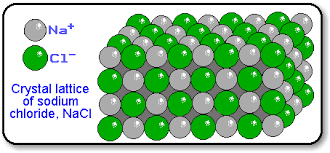
The three-dimension array of ions is called a crystal lattice. The lattice will grow until it runs out of one or the other of the ions, or until some contamination atoms or mechanical disturbance interrupt its growth.
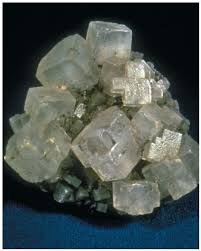
NaCl Crystals
By the time we see it on the table the crystals have been ground into small but still visible pieces. One feature of these sorts of crystals is that when emerged in water they readily are dissolved. I introduced the water (H2O) molecule as the product of an oxygen-hydrogen reaction. One of the subtleties of that molecule is that it is asymmetric. Those inscrutable quantum mechanical rules cause a water molecule to look like the image below.
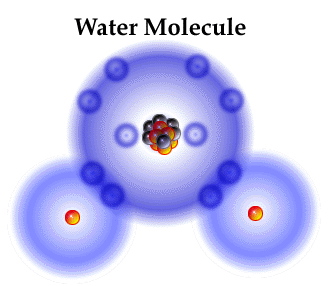
That asymmetry affects the distribution of electric charge in the molecule, leaving the oxygen end slightly negative and the hydrogen end slightly positive. This asymmetric charge distribution accounts for many of the peculiar properties of water. Among those properties is that water molecules interfere with the crystalline structure of table salt and other ionic crystals, dissolving the ions in the water. That process may be reversed by evaporating salty water to grow salt crystals.
So here comes a question. Which is the higher energy configuration of the ions, in a water solution or in the visible salt crystal? To figure this out, ask your self which state requires you to add energy to achieve it. The evaporation of water requires the addition of energy so you would predict that the visible salt crystal is a higher energy configuration.
Another question. Why do people spread salt to treat roadways with ice on them? If the salt crystals are a higher energy configuration than the dissolved salt, when salt dissolves we get that energy back as heat. The heat raises the temperature of the ice and it melts, improving the traction of the roadway.
In general a crystal or crystalline solid is a solid material whose constituents, such as atoms, molecules or ions, are arranged in a highly ordered microscopic structure, forming a crystal lattice that extends in all directions.
Water by itself may form a crystalline structure, as we all know, commonly known as ice. To understand this it would help to explain another way that energy is manifested in atoms, molecules and crystals. Atoms, ions and molecules are never at rest. The average speed of the particle’s motion is proportional to the temperature. As liquid water is cooled the motion of water molecules, banging into one another and the walls of a container, slows until the attraction of the molecules for each other begins to organize the atoms into an orderly array. This attraction among water molecules is mostly due to the positively charged end of the molecule being attracted to the negative end of a nearby molecule. Once locked into the crystal lattice, the molecules motion is reduced to dithering about their position in the lattice.
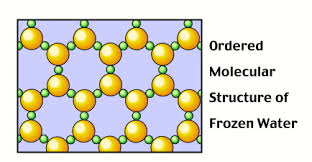
By heating ice we increase the temperature until the motion of the water molecules is strong enough to break the bonds holding the crystal together. The ice melts and we have liquid water. Continued heating raises the temperature of the liquid until another transition takes place and we get steam. As we cool the steam it begins to condense into water droplets which may coalesce on a cool surface into larger drops are recognizable as liquid water.
The effect of temperature is similar in many substances to its effect on water. Iron exists at normal temperatures as a solid structure the basis of which is a crystal. The iron atom has 26 protons and usually 28 neutrons. Its electron distribution is shown below.
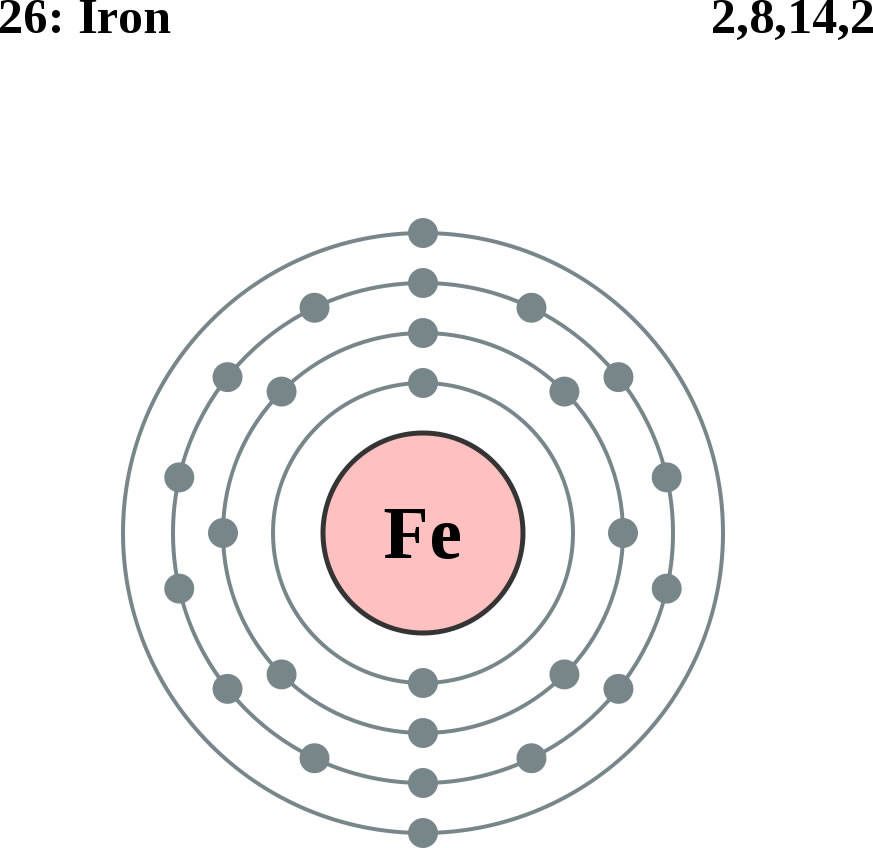
That pair of electrons in the outer shell is so loosely bound to the distant nucleus that they are easily confused as to exactly which iron atom they belong to. This leads to iron atoms existing in a sort of electron soup as those external electrons wander from atom to atom. Because of the unfaithfulness of the electrons the atoms each share a little bit of many electrons resulting in what is called a metallic bond among the atoms, organizing them into a crystal structure.
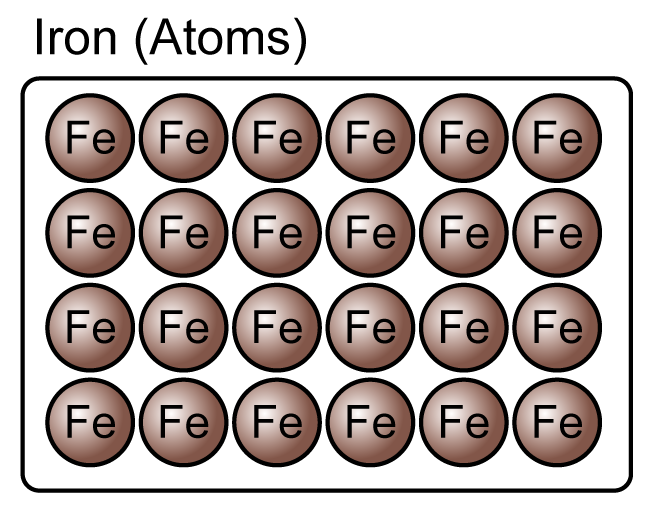
By raising the temperature of the iron we may get liquid iron at 2800°F. Raising the temperature still further it is possible to evaporate the iron to a vapor analogous to steam at 5182° F.
Examples of large crystals include snowflakes, diamonds, and table salt. Most solids are not single crystals but polycrystals, i.e. many microscopic crystals fused together into a single solid. Examples of polycrystals include most metals, rocks, ceramics, and ice. A third category of solids is amorphous solids, where the atoms have no periodic structure whatsoever. Examples of amorphous solids include glass, wax, and many plastics.
So we have started with atoms and seen several ways they come together in structures that lead to pieces of matter big enough to be visible to us. Along the way I pointed out some peculiar properties of water. In the next section we will explore water a bit more.
|




